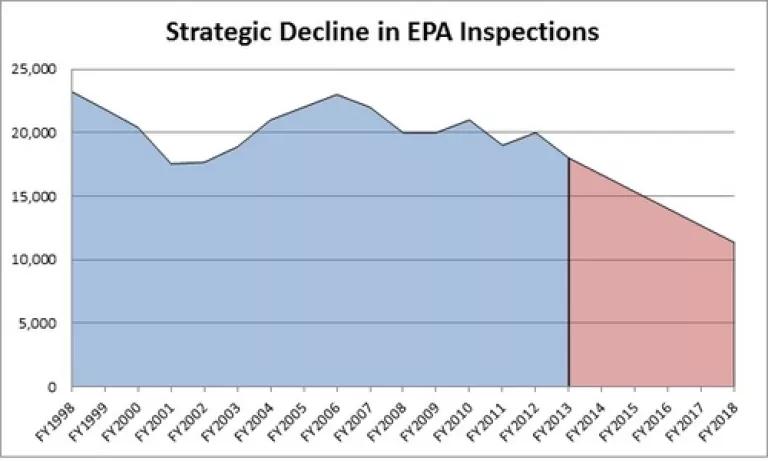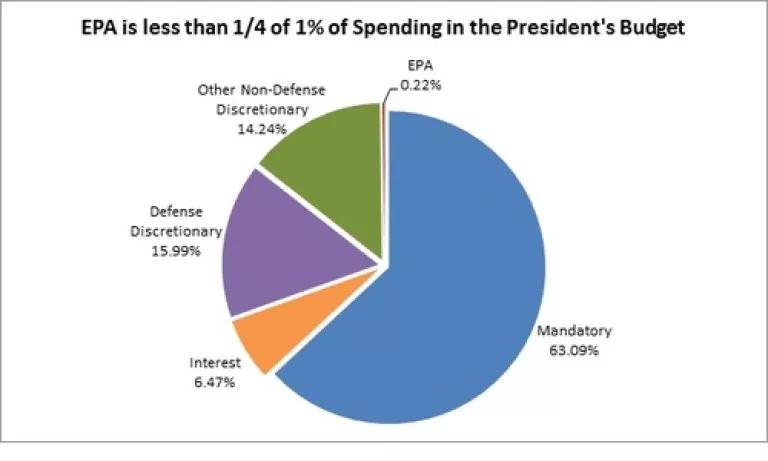
The federal budget is tight. Times are tough, so budget priorities stand out more clearly. In the President’s budget, priorities are funded and other programs suffer. At EPA, as Jon Devine’s blog points out, the biggest hit is the cut to support for state and local sewage treatment and drinking water repair and construction.
But what about the rest of EPA’s budget?
EPA is charged by Congress to carry out and enforce our basic environmental laws: the Clean Air Act, the Clean Water Act, the Safe Drinking Water Act, the Resource Conservation and Recovery Act, the Toxic Substances Control Act and CERCLA, better known as Superfund.
The EPA budget includes funds for scientists and economists who must carry out the complicated cost- benefit analyses required to move any EPA regulation forward.
The President’s budget did little to help EPA’s critical programs. Republicans have turned attacking EPA into a cottage industry. We were hoping the President’s budget would help protect these programs. It doesn’t do that.
The President announced a new $1 billion climate change program, but only $14 million is additional money for EPA. If we take the dramatic cuts in funds for water and sewer infrastructure out of the equation, EPA still suffers real cuts that will decrease its workforce, reduce its ability to protect the public, and weaken the enforcement of environmental laws. EPA’s funding has been on a downward trajectory for over a decade. Except for one year, 2010, EPA funding has been stagnant or worse. These graphs show the EPA budget without the sewage and drinking water funding, known as State Revolving Funds (SRFs):
Budget levels calculated based on EPA’s total enacted budget minus SRF funding; SRF values from FY91 to FY12 are from this CRS report, while FY13, FY14, and President’s FY15 are from EPA’s latest proposed budget. Inflation calculated using BLS’s February 2014 inflation data.
In the 2010 budget, the President projected that by 2014 the EPA budget would be 25% above what he has now proposed. In real dollars, adjusted for inflation, the EPA budget is nearly 30% below FY2010 levels. These cuts have meant our environment has suffered while polluters have benefited.
In the face of likely budget cuts and the sequester cuts, EPA’s response has been to ramp down its inspection and enforcement efforts. In a recently-issued draft strategic plan, EPA indicated that it intends to place a greater reliance on so-called “Next Generation Compliance Strategies,” by which it relies on industry self-regulating, along with enhanced public information, to encourage compliance. It is obvious that this downgrading of inspections is not to get better results but to meet budget-cutting demands.
This high-tech approach may work satisfactorily for the largest companies that have adequate high technology capabilities and a public reputation tied to consumer products sales. However, like the February chemical spill in Charleston, West Virginia and the coal ash spill in North Carolina, many companies in a position to create havoc can only be discovered by inspections or whistleblowers.
Even before releasing the draft strategic plan, the agency had begun cutting back on the number of enforcement actions. In February 2014 (inaccurately listed as 2013 in the link), the agency reported a decrease in in-person inspections and investigation in 2013 compared to 2012. The data below shows the disappointing direction of EPA’s key enforcement work and projections by NRDC based on EPA’s 5-year plan.

Historical inspection data as reported by EPA; projected inspections based on current rate and total expected FY2014-2018 inspections in EPA’s latest draft strategic plan.
These budget numbers are not scare tactics to get members of Congress up in arms that EPA is not doing its duty. Unlike border enforcement, these cutbacks in enforcing the law will be applauded by many members of the Congress and clearly many of their big donors. EPA plans not only far fewer inspections, but far fewer yearly enforcement actions than have been seen in over more than a decade.
Tied to fewer inspections, EPA predicts far fewer pounds of pollution will be controlled over the next five years. The agency expects enforcement actions under the alternative strategy to “reduce, treat, or eliminate” roughly 220 million pounds of water pollutants per year, while acknowledging that the annual average pollutant control for fiscal years 2005-2008 was 320 million pounds. By every single metric the EPA uses, cleanups over the next five years would be far below baselines. Pounds of air pollution reduced, commitments to clean up contaminated soil and water, and cleanup of toxic and pesticide pollutants would be nearly half the baseline. Hazardous waste cleanup would be nearly one quarter the baseline. That’s not the “progress” we need for our next generation.
Although the grants to states for program operations goes up marginally, EPA has given more responsibility for the states as its budget decreases. For instance, instead of a separate grant for beach testing, this program is once more zeroed out in the President’s budget and states must fend for themselves. Most of the environmental law inspections are not carried out by EPA, but by the states. But with the other demands on these state programs, there is no expectation that states will be increasing their enforcement and inspection work.
Another key and unique program at EPA is the research into environmental effects of chemicals and other work needed to set regulatory standards. There is an acknowledgement that the science needed to insure that products are safe and that standards reach levels that are protective, the budget for science research does keep up with inflation.
Budget in Context
Although we are disappointed with the President’s budget, the political facts may lead one to a conclusion that this EPA budget is as high as can be expected. In fact, with the pressure on all domestic spending because of the budget, EPA and the rest of discretionary spending is under tremendous pressure.
However, there is some hope. Last year’s levels were so low that the Republicans couldn’t get enough votes to pass the transportation appropriations bill and this year’s level will be similar. During a budget hearing in March, Senator Lindsey Graham (R-SC) said the budget levels were unsustainable and that $200 billion should be added to the spending to be split between defense and non-defense. The President recommended revenue increases to add $56 billion to the discretionary budget. As the impacts of these cuts become clear, there is a chance additional spending can be approved.

Data from OMB’s projected outlays for the President’s FY15 budget.
